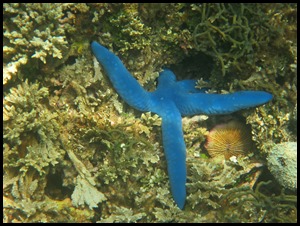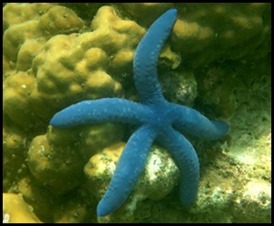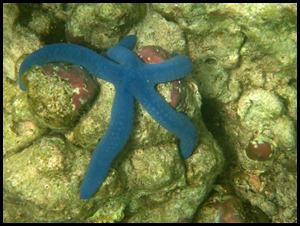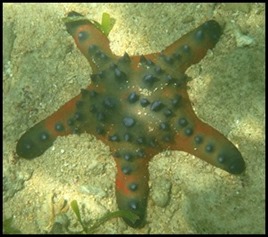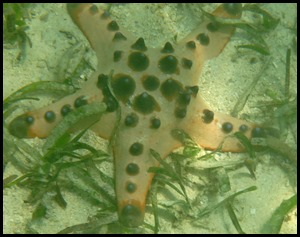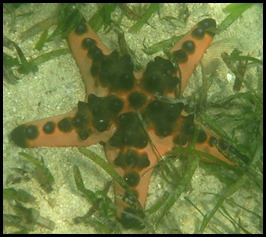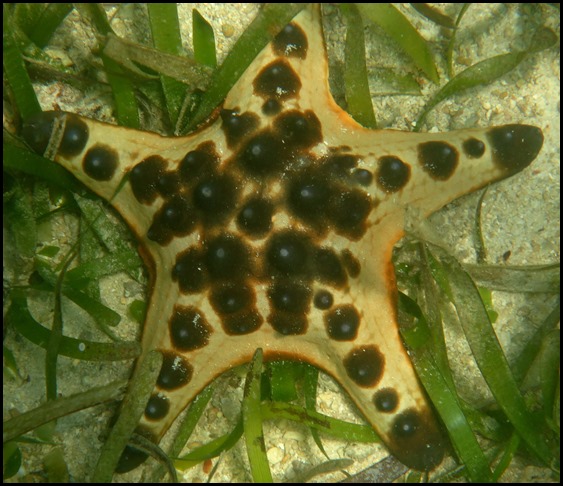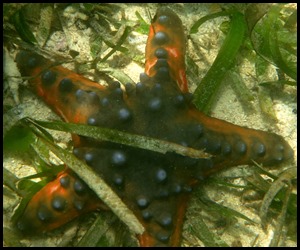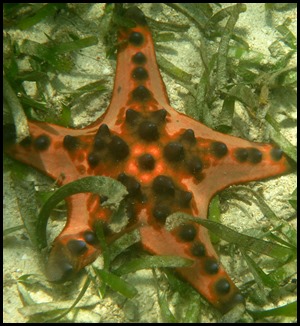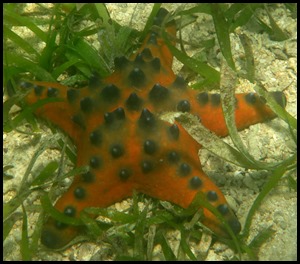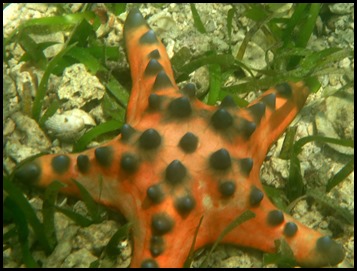Riung Starfish

|
Riung
Starfish
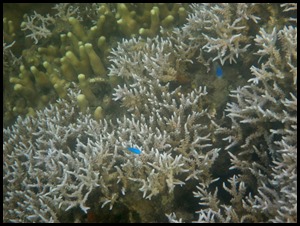 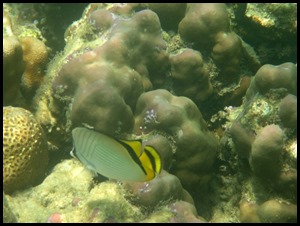 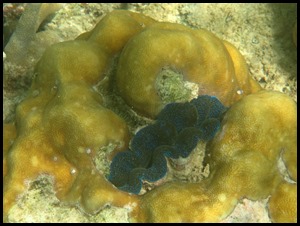 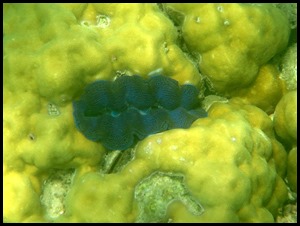 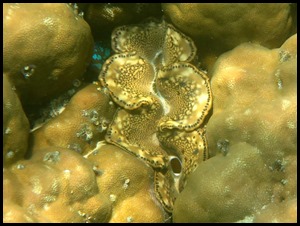 So much of the reef in the bay has
suffered terrible storm damage but amongst the debris we did see signs of new growth.
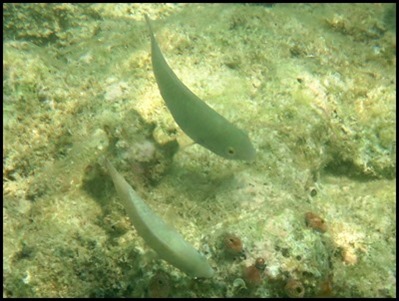 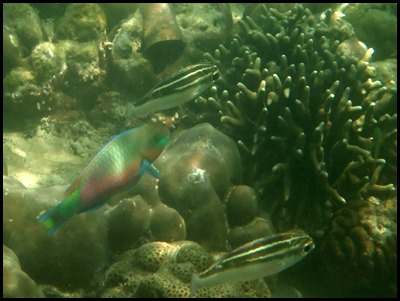 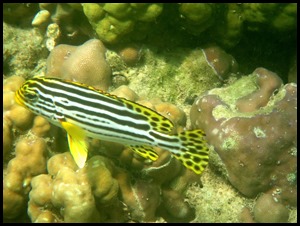 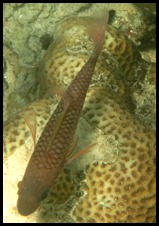 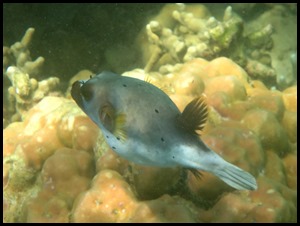 Several interesting
chaps.
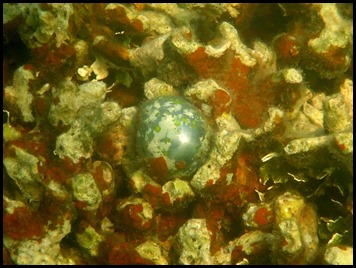 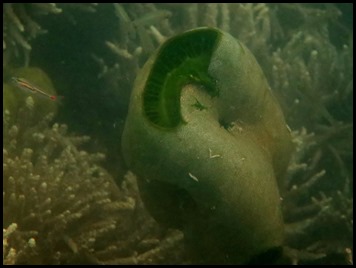 A couple of
mysteries.
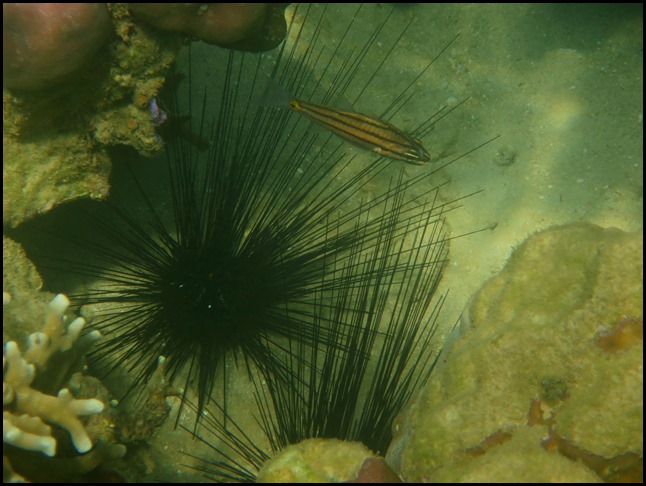 The
book says that the spines of a long-spined urchin are
four to eight inches, this pair didn’t read the manual and had impressive
foot-long jobs.
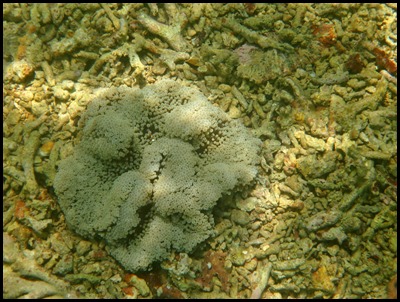 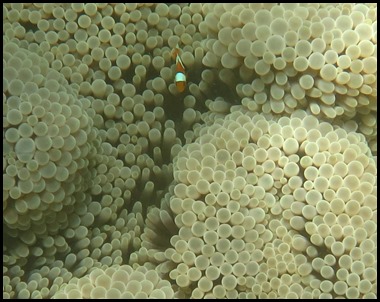 In the middle of a huge barren area we
saw one anemone with one single
Nemo.
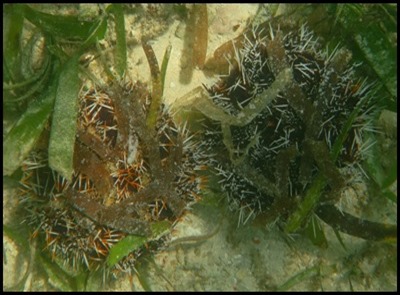 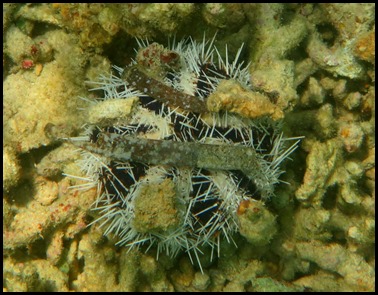 We always laugh at the urchins who think themselves invisible by the detritus they
carry.
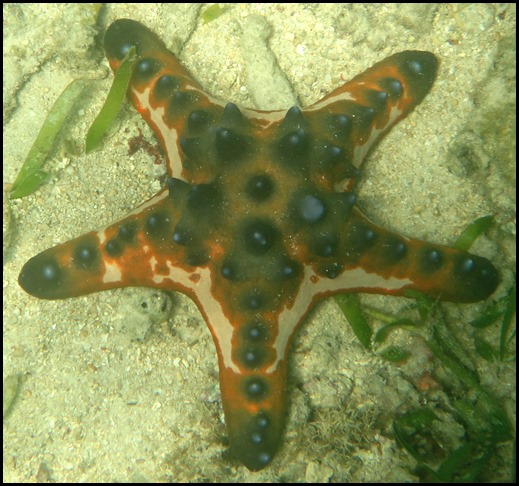 Between the reef edges was a huge
expanse of bare sand with grassy bits, how delighted we were to find so many
knobbed starfish marching about.
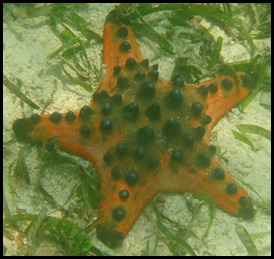 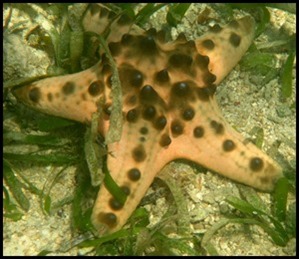 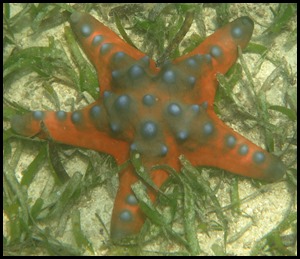 A surprising variety of colours, knob numbers and
distribution.
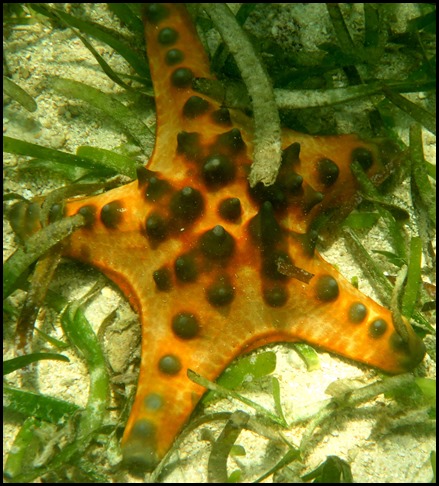 An article by the National Geographic: Marine scientists have undertaken the difficult task of replacing the beloved starfish’s common name with sea star because, well, the starfish is not a fish. It’s an echinoderm, closely related to sea urchins and sand dollars.
There are some 2,000 species of sea star living in all the world’s oceans, from tropical habitats to the cold seafloor. The five-arm varieties are the most common, hence their name, but species with 10, 20, and even 40 arms exist. They have bony, calcified skin, which protects them from most predators, and many wear striking colours that camouflage them or scare off potential attackers. Purely marine animals, there are no freshwater sea stars, and only a few live in brackish water.
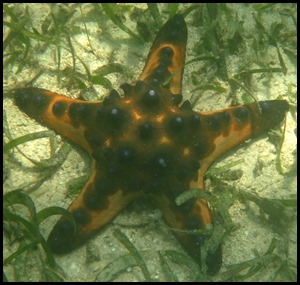  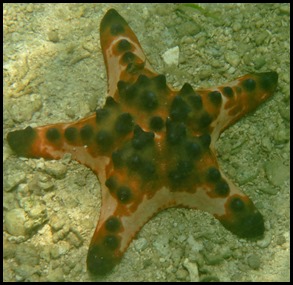
Beyond their distinctive shape, sea stars are famous for their ability to regenerate limbs, and in some cases, entire bodies. They accomplish this by housing most or all of their vital organs in their arms. Some require the central body to be intact to regenerate, but a few species can grow an entirely new sea star just from a portion of a severed limb. Most sea stars also have the remarkable ability to consume prey outside their bodies. Using tiny, suction-cupped tube feet, they pry open clams or oysters, and their sack-like cardiac stomach emerges from their mouth and oozes inside the shell. The stomach then envelops the prey to digest it, and finally withdraws back into the body.
Type: Invertebrate Diet: Carnivore Average life span in the wild: Up to 35 years Size: 4.7 to 9.4 in (12 to 24 cm) Weight: Up to 11 pounds (5 kg) Did you know? Sea stars have no brains and no blood. Their nervous system is spread through their arms and their “blood” is actually filtered sea water.
ALL IN ALL WE SAW HUNDREDS BIG, FAT CHAPS WITH MEASLES.......... |
